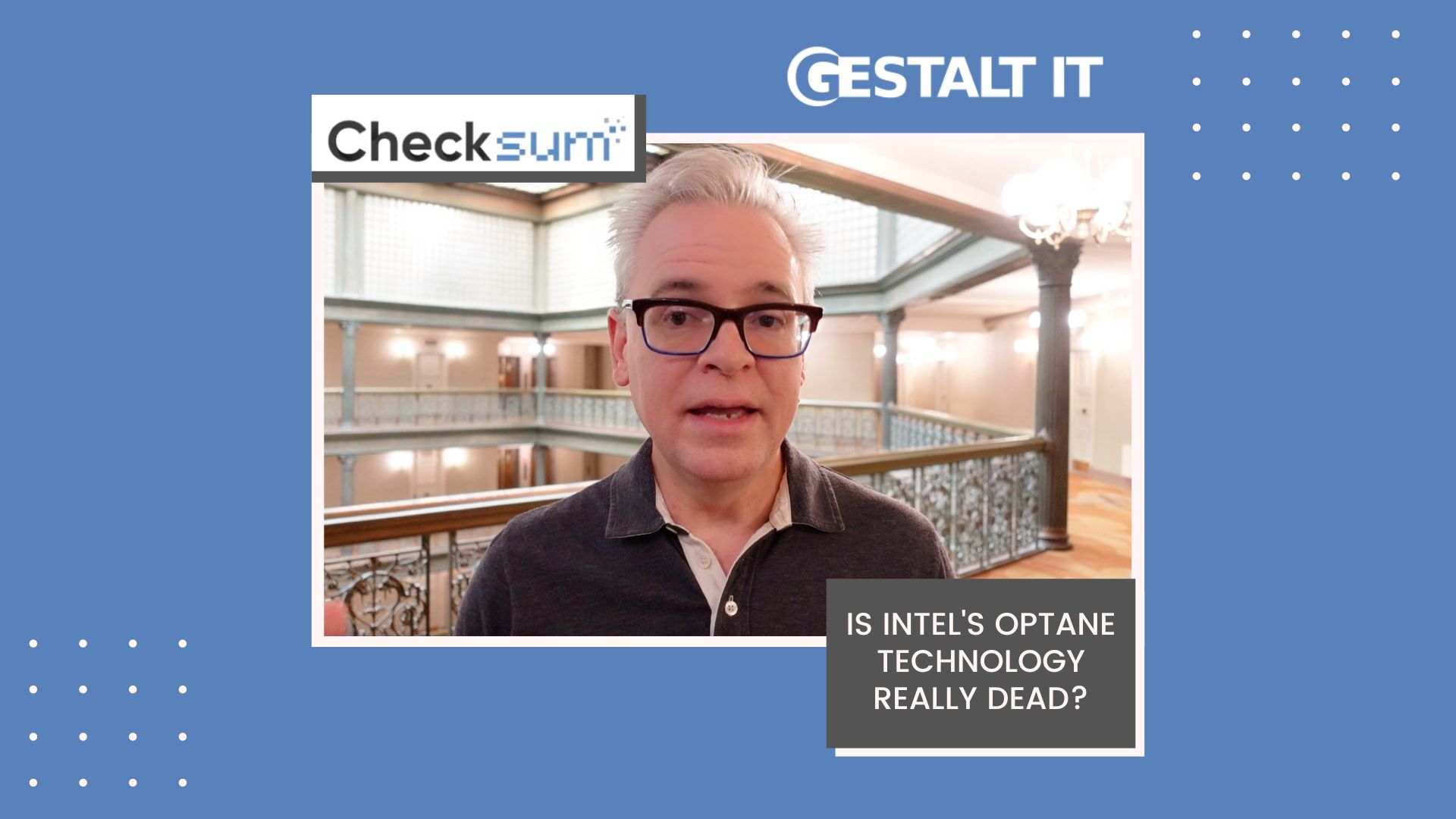Flash storage is experiencing a hardware industry boom. Ten years ago, flash SSDs were low density and extremely expensive. Flash forward to today, and flash storage is taking over the modern datacenter.
Customers see massive gains in performance for their applications, as flash storage density and performance increase. Intel has been at the forefront of the flash storage revolution, creating a high-performance, high-capacity SSD storage with its Optane SSDs. These SSDs have revolutionized affordable, high-density server memory with Optane Persistent Memory.
As Kristie Mann, General Manager, Intel Optane Persistent Memory Division, said during Storage Field Day 20, “For 50 years we have accepted that we have this gap between memory and storage, and you have to trade it off, and now we are saying ‘Look if you didn’t have that gap, what would you do?'”
Intel presented its Intel Optane SSDs at Storage Field Day 20.
Intel Persistent Memory and DAOS
Intel’s Optane line of storage products seeks to solve the gap in memory capacity through its Optane Persistent Memory modules. Optane Persistent Memory is packaged in DIMMs and resides on the same bus as DRAM. It can act in Memory Mode, appearing transparently to applications and addressable as volatile memory. Memory Mode delivers affordable, high-capacity memory to any application.
Persistent Memory also offers App Direct Mode, which allows compatible operating systems and applications to directly address the Persistent Memory module and utilize two memory pools; DRAM for volatile memory requirements and persistent memory. These two pools combined can reduce latency between cache and the storage tiers, reducing write latency.
Intel has developed an open-source software ecosystem, Distributed Asynchronous Object Store (DAOS), designed to combine Intel Persistent Memory with Optane SSDs and 3D NAND storage. This Persistent Memory aware application provides low latency and high IOPS to its scale-out storage architecture for big data and AI workloads. DAOS directs metadata, low latency I/O, indexing, and queries to the Persistent Memory while directing bulk data to Optane SSD and 3D NAND storage. DAOS is architected to take advantage of NVMe while avoiding the traditional datapath utilized by conventional storage systems.
Persistent Memory Breaks World Record in the IO-500 HPC Benchmark
Intel shared some exciting news during Storage Field Day 20. It broke the world record for file system performance in the Supercompute IO-500 list by combining DAOS and Persistent Memory into a 30-node configuration. It achieved 3x the performance of the top competing non-DAOS solution with ¼ of the nodes. Mann reiterated that this performance is only possible through byte-addressable persistence in memory, combined with the DAOS software stack, which reduces or eliminates the block file system stack.
Intel Optane combines Persistent Memory, Optane SSD, and 3D NAND storage to create a high performance, affordable solution to solve data center scalability problems. Persistent Memory provides high-capacity memory to meet growing demands for large memory servers while working with Optane SSD and 3D NAND to provide record-breaking performance to the field of AI, Data Analytics, and High-Performance Computing. At Storage Field Day 20 with Intel, Intel presented a unified vision of the future of flash storage and how they set world record performance with the DAOS software ecosystem combined with the Optane line of storage devices.
Server Density Growth Necessitates Change
Virtualization and containerization have caused architects to change their hardware designs. When servers were all bare metal, application architects designed systems with relatively low CPU cores and memory. The application drove the architecture on a case-by-case basis.
As virtualization and containers became mainstream, servers grew denser in CPU and memory. DRAM capacity has not developed as quickly as CPU core density, creating a gap between customer requirements and hardware vendors’ ability to provide an affordable, memory dense solution.
By 2025, a vast majority of systems will require 512 GB or more memory, and DRAM development is not keeping to that pace.
Intel’s Optane solution addresses this gap and is the next step in flash storage.
To learn more about Intel Optane and its portfolio of products, check out Intel’s presentations at Storage Field Day 20.




